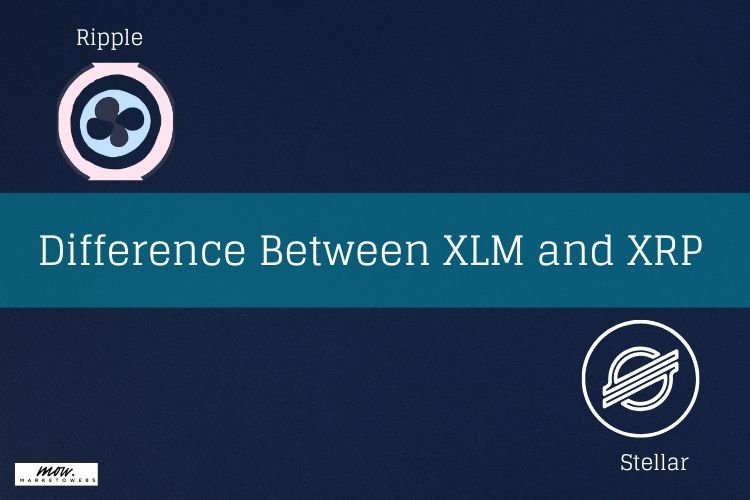
As the cryptocurrency world grows, Bitcoin (BTC) remains a fundamental asset, valued for its security and decentralized structure. However, with the rise of decentralized finance (DeFi), Bitcoin holders have found new ways to leverage their assets on other blockchains. Wrapped Bitcoin (WBTC) bridges BTC with Ethereum’s ecosystem, allowing users to engage in DeFi activities like lending, staking, and yield farming. This article explores the critical distinctions between Bitcoin and Wrapped Bitcoin, helping you understand which asset suits different investment and utility needs.
What Is Bitcoin?
Bitcoin, launched in 2009, is widely considered the first successful cryptocurrency, using a decentralized digital ledger called the blockchain to record transactions without a central authority. This technology enables peer-to-peer transfers, making it possible for individuals to send and receive digital value globally, independently of traditional banks or governments. Each transaction is verified by a network of computers, or “nodes,” using cryptography, which helps secure Bitcoin’s blockchain, making it both transparent and resistant to tampering.
The blockchain’s transparency and security are essential to Bitcoin’s appeal, as they assure users that transactions are public, permanent, and practically impossible to alter. Bitcoin transactions are recorded on this ledger, which is maintained by a process called mining. In mining, participants, or “miners,” solve complex mathematical problems to validate and add transactions to the blockchain, earning new bitcoins as a reward, which also releases new Bitcoin into circulation.
Bitcoin is distinct from fiat currencies because it has a capped supply of 21 million coins, which limits inflation and could potentially increase its value over time. This scarcity is designed to make Bitcoin similar to precious metals like gold, giving it an “anti-inflationary” property often valued by investors looking for assets with limited supply. Additionally, Bitcoin’s decentralized nature provides more freedom for users, as it reduces dependency on traditional financial institutions.

What Are Wrapped Tokens?
Wrapped tokens allow cryptocurrency assets from one blockchain to be used on another blockchain by “wrapping” them in a compatible format. This mechanism is often used to make assets from non-Ethereum networks, like Bitcoin (BTC), usable within Ethereum-based applications. By “wrapping” the original asset, users gain access to decentralized finance (DeFi) protocols, decentralized applications (dApps), and liquidity pools on networks where the asset originally wasn’t supported.
A primary example is Wrapped Bitcoin (WBTC). Launched by BitGo, Kyber Network, and Ren in 2019, WBTC is an ERC-20 token that mirrors the value of BTC at a 1:1 ratio. It enables Bitcoin holders to engage with Ethereum’s DeFi ecosystem. This process involves several steps: BTC is sent to a custodian who then issues an equivalent amount of WBTC. The BTC is locked in a secure vault until the WBTC is “unwrapped” or redeemed, at which point the custodian releases the BTC back to the user. The process relies on smart contracts and a decentralized organization (DAO) for transparency and security.
Wrapped tokens are useful for increasing liquidity and utility, as they allow the significant value in assets like Bitcoin to participate in a wider range of applications. Wrapped assets make liquidity readily available on Ethereum, allowing DeFi platforms to function more efficiently by reducing fragmentation across different blockchains. In addition, these tokens enable users to perform functions like yield farming, staking, and taking loans against assets that were previously restricted to their own blockchains.
Wrapped tokens thus bridge liquidity gaps across ecosystems and expand the potential applications for digital assets, helping to integrate various blockchain economies and bringing added flexibility to cryptocurrency holders looking to maximize the utility of their assets.
What Is Wrapped Bitcoin (WBTC)?
Wrapped Bitcoin (WBTC) is a unique tokenized version of Bitcoin (BTC) that operates on the Ethereum blockchain, designed to make BTC compatible with Ethereum’s decentralized finance (DeFi) ecosystem. Launched in 2019 through a collaboration between BitGo, Kyber Network, and Ren, WBTC effectively “wraps” BTC in an ERC-20 token, allowing Bitcoin holders to use their assets in Ethereum-based applications like decentralized exchanges (DEXs) and lending platforms.
The WBTC protocol relies on a system of merchants, custodians, and the WBTC DAO (Decentralized Autonomous Organization) to manage token issuance and ensure the security of the asset. In practice, users deposit BTC with custodians who “lock” the BTC, minting an equivalent amount of WBTC tokens on Ethereum, keeping a 1:1 peg with Bitcoin’s value. If users wish to redeem BTC, the WBTC is burned, and the BTC is released back to them. This transparent system allows Bitcoin holders to tap into Ethereum’s vast array of DeFi applications without converting their BTC directly.
By enabling Bitcoin’s liquidity within Ethereum’s ecosystem, WBTC provides an innovative pathway for yield farming, lending, and other DeFi activities that would otherwise be inaccessible to BTC holders. Additionally, the transparent nature of the WBTC protocol—backed by on-chain proof of reserves—ensures that every WBTC token is verifiable and fully collateralized, giving users confidence in the system’s security. This bridge between Bitcoin and Ethereum has been instrumental in expanding the functionality of BTC beyond simple transactions.

Bitcoin vs Wrapped Bitcoin Difference
Here’s a unique breakdown of Bitcoin vs. Wrapped Bitcoin with the requested focus areas.
Overview and Differences
Bitcoin (BTC) is the original cryptocurrency operating on its independent blockchain. Wrapped Bitcoin (WBTC), however, is an ERC-20 token representing Bitcoin on the Ethereum blockchain. Each WBTC is pegged 1:1 with BTC, meaning it reflects Bitcoin’s price while enabling interoperability within Ethereum’s ecosystem, including DeFi applications.
How They Work
Bitcoin transactions rely on its proof-of-work consensus, where miners verify and record transactions, making it highly secure and decentralized. WBTC, on the other hand, involves a system of custodians and merchants. When BTC is deposited with a custodian, an equivalent amount of WBTC is minted on Ethereum. To reverse this, WBTC is burned, and the corresponding BTC is released back to the owner. This minting and burning mechanism ensures that WBTC remains fully backed by Bitcoin at all times.
Use Cases
Bitcoin’s primary use cases revolve around stores of value, digital payments, and investment. WBTC, while retaining BTC’s value, unlocks access to Ethereum-based DeFi, allowing users to participate in lending, yield farming, and liquidity pools on protocols like Aave and Curve. The flexibility WBTC offers has made it popular for users wanting to leverage Bitcoin within Ethereum’s more versatile and programmable ecosystem.
Blockchain Compatibility
Bitcoin and Ethereum blockchains are distinct, with Bitcoin focusing solely on secure, decentralized transactions. Ethereum, however, supports a broad range of applications beyond just payments. WBTC effectively bridges this gap, acting as a Bitcoin proxy that can be utilized across Ethereum’s dApps, significantly expanding the utility of BTC in Ethereum’s smart contract-based ecosystem.
Transaction Speed and Fees
Bitcoin transactions can take longer and often incur higher fees, especially during high network traffic. WBTC, processed as an ERC-20 token, benefits from Ethereum’s transaction speeds and, potentially, lower fees depending on network activity. As Ethereum upgrades continue, transaction costs and speeds could improve further, potentially increasing the appeal of WBTC.
Final Thought
In summary, while Bitcoin remains a leading digital asset for secure, long-term investment and decentralized transactions, Wrapped Bitcoin (WBTC) expands Bitcoin’s utility by bringing its value into the Ethereum ecosystem. WBTC allows Bitcoin holders to access Ethereum’s DeFi platforms, unlocking opportunities for earning, lending, and trading. This integration of Bitcoin into a more versatile blockchain highlights a bridge between traditional crypto assets and the dynamic world of decentralized finance, offering both BTC and WBTC users unique benefits depending on their needs.



